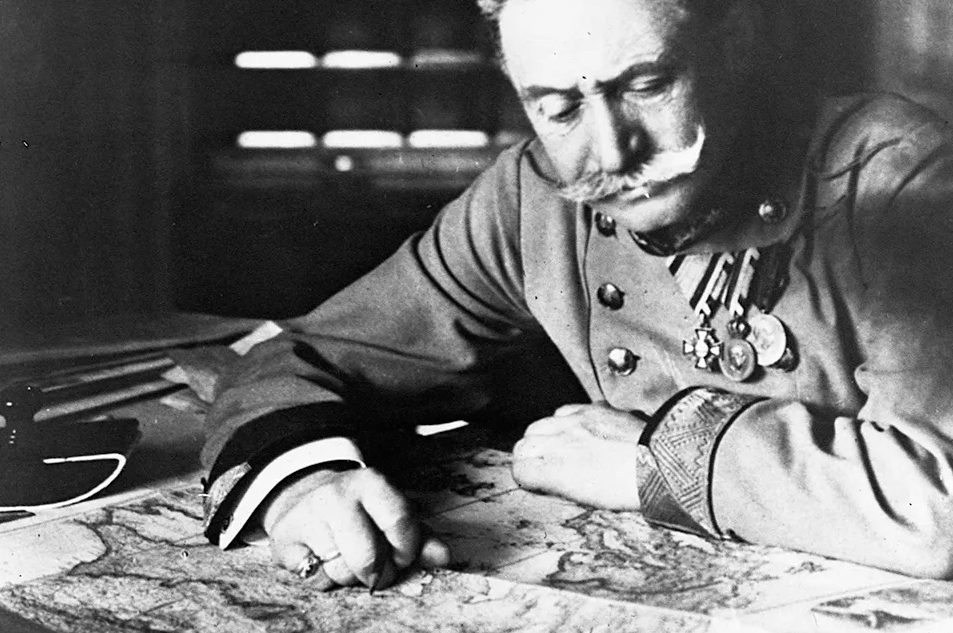Ten years ago David Cameron, as the British prime minister, pledged $65 million for the centenary of World War One. The focus was on “capturing our national spirit in every corner of the country, something that says something about who we are as a people.” Beyond a celebration of the Tommy on the Western Front and a belated acknowledgement of colonial Britain’s sacrifice, it was a missed opportunity. There was little attempt to better understand the region where the war began — and where, according to Nick Lloyd’s exhaustive The Eastern Front, it never really ended.
Indicative of his understandable wariness about penetrating beyond Britain’s comfort zone (he is the acclaimed author of The Western Front), Lloyd begins his massive new military history with Winston Churchill, who concluded that World War One in the East was “the most frightful misfortune” to befall mankind “since the collapse of the Roman Empire before the Barbarians.” Lloyd is quick to reinforce this sentiment, moving briskly through the brutal double murder of the Austro-Hungarian Archduke Franz Ferdinand and his wife Sophie that triggered war, into the bloody nuts and bolts of the conflagration’s opening campaigns in the shadow of the Carpathians.
There are warning shots of what’s to come in the introduction: the East’s elongated 900-mile front line, with its potential for galloping breakthroughs, and a reference to unimaginable casualty figures — upwards of 2.3 million dead Russians (a sobering thought in the context of today’s Ukraine war) and 1.2 million Austro-Hungarians. But those figures do little to prepare the reader for the minutiae of this slow-motion horror story. Cue rigid imperial mindsets prioritizing military valor over the mechanics of war, mismatched alliances that slopped into conflict without coordinating priorities and instant death on an unprecedented scale.
War was scarcely under way when a first abortive campaign against scrappy Serbia cost shambolic Austria-Hungary 600 officers and 22,000 men. The dual monarchy fared little better with its opening shots against the Russians. An early “half victory” cost its Fourth Army 40,000 men. So much for the empire’s legendary double-headed eagle. Austria-Hungary was a military basket case from the word go.
It makes for pitiful reading; more so when Lloyd laces his text with an occasional human touch. Austria-Hungary’s chief of general staff, Franz Conrad von Hötzendorf, was a firm believer in war as the only means of “upholding the empire’s status as one of the world’s great powers.” Nothing could get in the way. He handled news of his own son’s death in September 1914 brusquely, allowing himself one hour to grieve before “washing his face, straightening his jacket and regaining his composure.” Hötzendorf later admitted: “The gravity of the war situation made it necessary to switch off any personal feelings.” On went the killing.
The dual monarchy of Austria-Hungary was a military basket case from the word go
The parlous state of Austria-Hungary underlines the staggering achievements of its German ally in the east. Lloyd’s text is a valuable reminder of why Germany found eventual defeat so hard to come to terms with. “How could the country that had dismantled Czarist Russia and overrun the Balkans, creating a vast new empire in the process, have lost the war?” As he pertinently underlines, from a German perspective “the war had been won in the East and it was not hard to believe it could be done again.” A standout example of German derring-do was its crushing defeat of Romania, which entered the war on the side of the Entente in August 1916, ill-equipped and exposed on two fronts. Germany acted fast: Field Marshal Mackensen brought his mixed force up through Bulgaria and a recharged General Falkenhayn pressed east through Transylvania. They were in Bucharest for Christmas.
Peppered with maps and exacting research, Lloyd’s text meticulously establishes these breakthrough moments in the broader context of war. But the book’s primary focus on military detail and power-brokering is both a strength and weakness. Today Ukraine’s President Zelensky, like Churchill before him, is a reminder that morale and propaganda are the lifeblood of modern war.
Romania lived to fight another day in 1917 and did not succumb to revolution like neighboring Russia, in part thanks to its extraordinary English-born Queen Marie. A regular presence near the front line and one of the most photographed women in the world, Marie was an astonishing propagandist for her small country. In 1918 Germany’s Mackensen recognized that the queen “has been and still is our worst enemy.” French general Berthelot, who had been parachuted in to troubleshoot for Romania, took inspiration from her; and the New York Times admitted she was one of the “vivid and unforgettable” personalities of war. Romania emerged from the humiliation of capitulation as the only country to boast an emboldened monarchy in November 1918. Yet The Eastern Front, like so many other military accounts, doesn’t mention her.
This should not distract from the breadth and detail of Lloyd’s overall epic achievement. However, it is a reminder that military history remains a relatively insular and predominantly male affair, even in the retelling of world wars where winning required more than an ability to outgun the enemy.
This article was originally published in The Spectator’s UK magazine. Subscribe to the World edition here.

























